Forty Birds & A Million Flowers
A dive into the global flower industry and a peek into my sketchbook.
You Were All So Nice Last Month!
Thanks to all of you who posted your comments and input about this little newsletter. I had mentioned that as I switched from Mailchimp to Substack, I felt like I needed to make this newsletter about something. So many of you chimed in and said, “Oh hell no. Don’t do that!” and I had to love you all for it, because it aligns so perfectly with my natural disinclination to build a brand, pick a lane, etc. So this thing is going to continue to be a hodge-podge as it’s always been. Please continue to post questions, comments, etc—I would love to hear from you!
Sketchbook Tour: My First Forty Birds
About a year ago, I downloaded the Merlin Bird ID app (made by the clever people at the Cornell Lab of Ornithology) and now whenever I’m out and about, I’m holding up my phone to listen for birdsong. I’m not much of a birder, but it’s cool that after a year of following birdsong around the neighborhood, I can recognize the most common birds around here. It’s always a major event, when I’m traveling, to add a new bird to the list.
I’m only up to 88 birds so far. Not a very impressive life list, really. But I do enjoy drawing and painting them. (Not from life! I’m not quick enough for that. I’m working from photos I find online.) The birds on the left side of this sketchbook are done in gouache, and the ones on the right are watercolor, both with a bit of colored pencil here and there. Drawing them definitely makes them easier to recognize if I spot them hopping around, and I always try to look up a few weird facts to write in the margins or post online.
This sketchbook covers the first 40 birds I found last summer. For this one I used a spiral-bound watercolor sketchbook (Canson, although I can’t find this exact one online anymore), but for the next one I’m going to use a Stillman & Birn Zeta notebook, which can handle a little watercolor but is much better for ink, gouache, colored pencil, pastel, etc. I thought I’d try colored pencil and Neocolor II crayons this time.
Please share your bird-related stories, insights, artworks, etc in the comments!
Where Do All These Flowers Come From?
A million years ago (it was actually 2007) I wrote a book about the global flower industry called Flower Confidential. I got the idea to write it when I visited a flower farm in northern California and realized I knew nothing about how flowers were bred, grown, shipped, and sold for the commercial flower trade. I figured other people might also find that journey interesting.
I had no idea that so many people in the floral industry would read it, much less go out and make actual life decisions based on it! It took a while—years, really—for me to even find out that this was happening. No one told me! But once in a while at an event, a young woman would come up to me and say, “I read your book and decided to drop out of college and rent a couple acres of land, and now I’m an organic flower farmer.” I’d always look around nervously to see if her mother was standing nearby, ready to beat me over the head with my own book! But I have yet to be beaten by any parents of flower farmers, so I guess it’s working out OK.
Anyway, here are a few nice things that have landed in my in-box recently on this subject:
A quick interview with florist Jennie Love about her influences and aspirations.
A totally sweet essay from Teresa Sabankaya on p. 9 of this glorious edition of the Slow Flowers Journal, published by the amazing Debra Prinzing of Slow Flowers.
This super interesting video about how much the enormous flower market in The Netherlands has changed since I visited it almost 20 years ago. I thought it was strange at the time that they were still gathering together in person to conduct flower auctions! Here’s what I said about it in my book:
Here’s a Fun Show You Can Watch for Free
I will never be anyone’s Portrait Artist of the Year, as you can probably guess from these goofy little drawings of interesting women (bell hooks in watercolor & colored pencil, Georgia O’Keeffe in ink, and Brenda Blethyn as Vera Stanhope in Neocolor II crayon), but I sure did enjoy watching Portrait Artist of the Year on TubiTV. It’s free to watch, and they have four seasons online right now. If you’re a fan of British television and film, you’ll probably recognize a few of your favorite actors sitting for their portraits. Maybe it’ll inspire you to pick up a crayon and draw a picture.
Asked & answered: Do You Work on More Than One Book at a Time?
Ask me a question and win a free book! Read on to find out how. This month’s winner is Karen Taylor, who asks:
I was wondering if you work in linear fashion - only working on one book at a time until it is finished, then beginning a new one or if you ever have more than one in the works at a time? Like some artists who may be working on several paintings at a time.
This is a great question, because on the surface, it seems like I would be able to work on more than one book at a time. I’m very good at setting up a schedule for myself, working at a calm and sustainable pace, and (this part is more recent, I wasn’t always like this) knowing when to stop working and to go have a life. So from the outside, it doesn’t look very taxing. Anyone observing from the sidelines might think, “Well, if she just hustled a bit more, she could have another book on the go.”
But the fact is that writing a book seems to devour every ounce of attention I have for ANYTHING. The effort of putting ideas down on paper in a form that could actually go out into the world, via a publisher, in the form of an actual book, is completely draining for me. It leaves my head entirely empty. At the end of a regular working day, I honestly cannot think of much to talk about. I become even more boring and bland than usual.
For whatever reason, this has been more pronounced with the latest book I’m working on (which you can read about here.) It’s been more of an effort for me to even write this newsletter, or to post something on social media. I just don’t feel like I have anything to put out into the world. And I don’t think it’s because this book is necessarily more taxing—I think maybe I’m just running on a little less fuel, after the last couple of years.
So that’s a long way of saying—nope, I’ve never been able to even think about more than one book at a time, and that tendency seems to be getting more pronounced as time goes by.
On the other hand, I think it can be very helpful for painters to work on more than one painting at a time. Paintings are short-term propositions compared to a book. And the best advice I ever heard for painters came from Nicholas Wilton (sorry, I can’t find a specific link, but check him out if you’re a painter looking for words of wisdom), who said that when a painter gets stuck, they should not power through. They should not stay in the stuck place. Staying in the stuck place just means more time feeling stuck. Instead, put it down and go work on another painting that does feel good. Paint something else that is giving you a feeling of forward momentum. Spend as much of your painting time as possible in that state where you feel curious and excited and engaged. And if that means working on ten different paintings at once, do it! Just keep moving away from STUCK and towards UNSTUCK.
But my experience with writing is that you just have to power through and stick with it, and wrestle with being stuck. Sometimes, you can jump around to another part of the book, or just write a crappy placeholder page and come back later to fix it when you have some better ideas.
But if I put the whole entire book down every time I felt stuck, and went to work on another book? My brain would just switch over to the new book, forget about the old book, and lose interest in it entirely. The old book would be like leftovers that have been in the fridge too long. It would get tossed out.
Ask a question, win a book!
Ask me anything! Questions about writing, art, what I eat for lunch…it’s all fair game! And if you’ve asked a question before, ask it again! I love all your questions and hope to get to them eventually. If I pick your question to answer in the next newsletter, I’ll get in touch with you to ask for your address, and I’ll send you the book of your choice. Just click this button and post your question:
The bit at the end (almost)
I teach a lot of art & writing classes online.
I’ve written a bunch of books, which you can see here. Signed copies of some of them are for sale from my husband’s shop, Downtown Brown Books.
Occasionally I have small paintings available for sale.
My books, along with many books I’ve recommended in this newsletter, are available at Bookshop, where sales benefit independent bookstores.
You can find me on Instagram, Twitter, Facebook
What are you reading?
I seem to be coming out of my Covid-induced reading slump at last. For a couple of years, I could only bear to read a certain kind of mid-century British lady fiction, which meant a lot of Ursula Orange, Stella Gibbons, Margery Sharp, etc. Finally I’m in the mood for something different, something that I would call “smart contemporary beach read.” I re-read a couple Liane Moriarty novels while I was easing into this new phase, and then I thought, “Isn’t there anything by Meg Wolitzer that I missed?” Apparently there was. This one is good and smart and weird and fun, like all of her others.
Feel free to post some book recommendations in the comments!

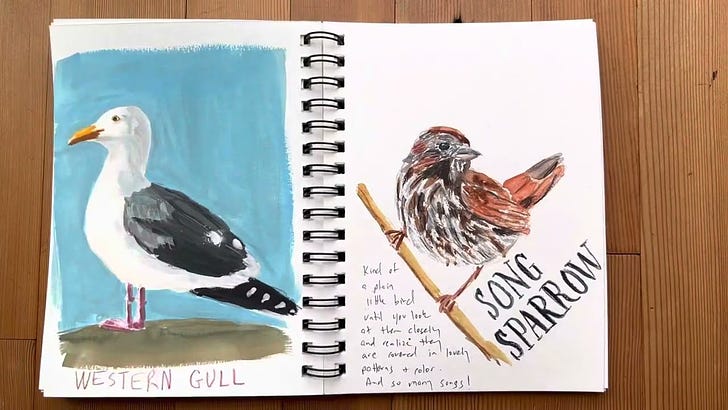


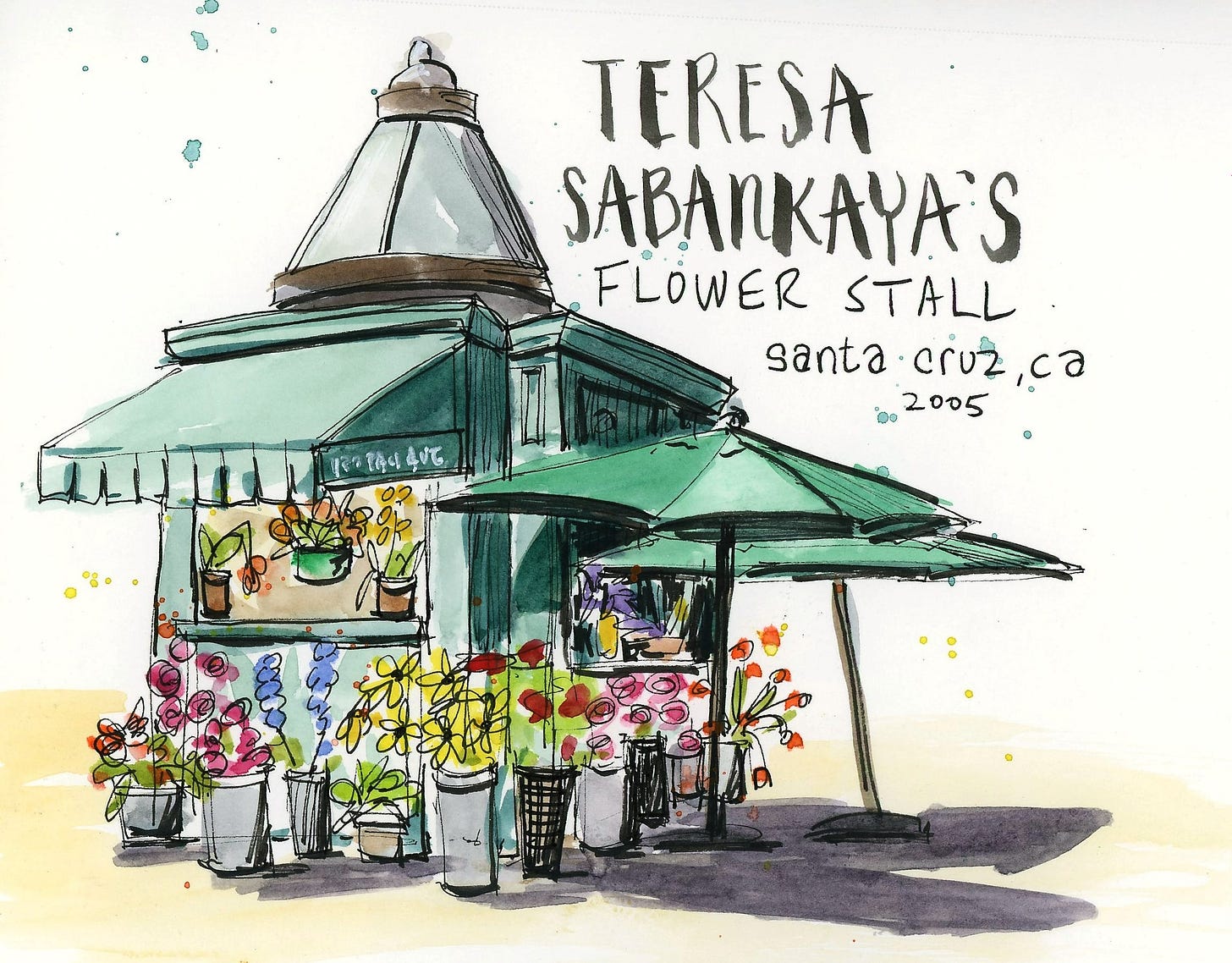
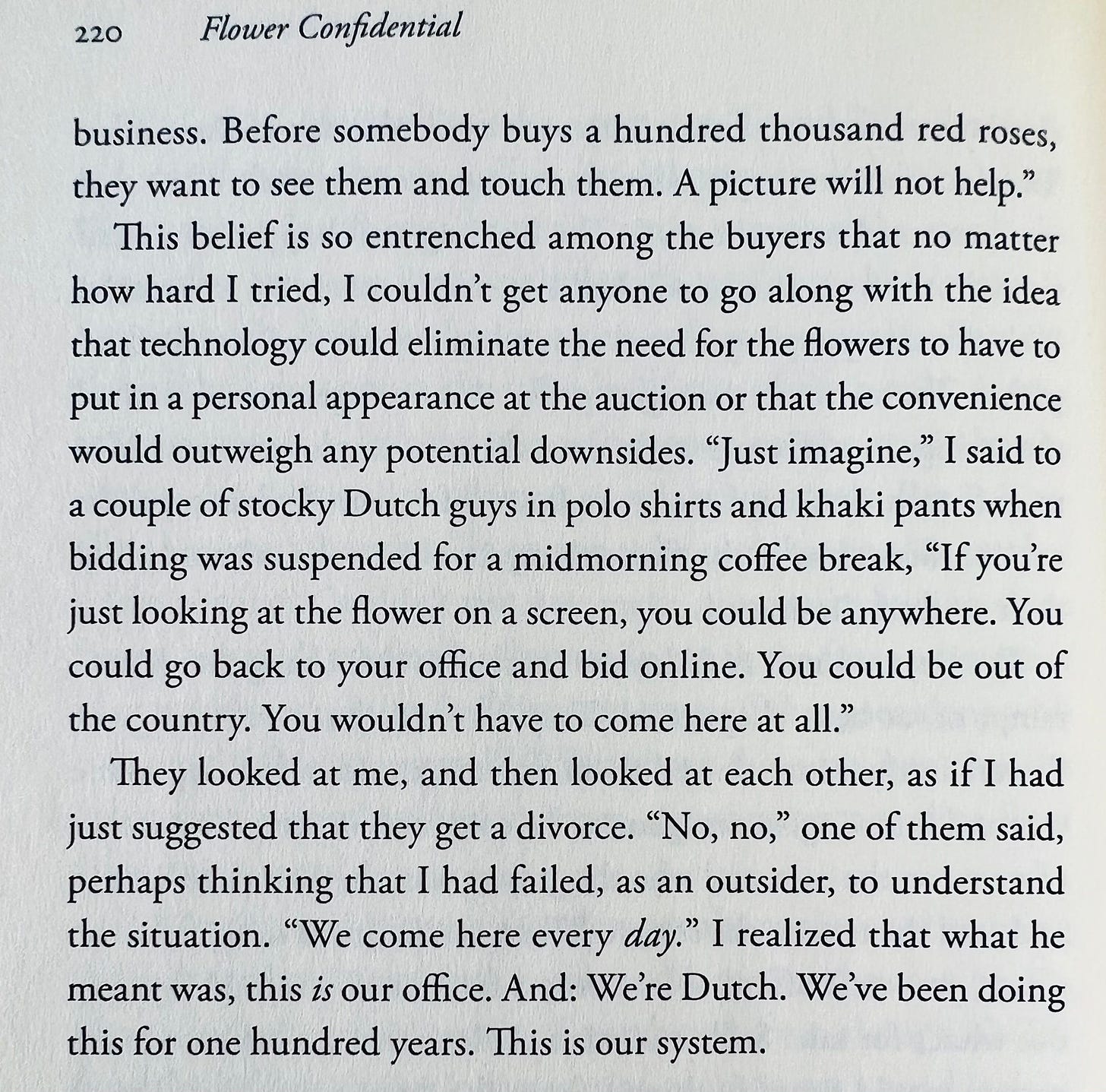
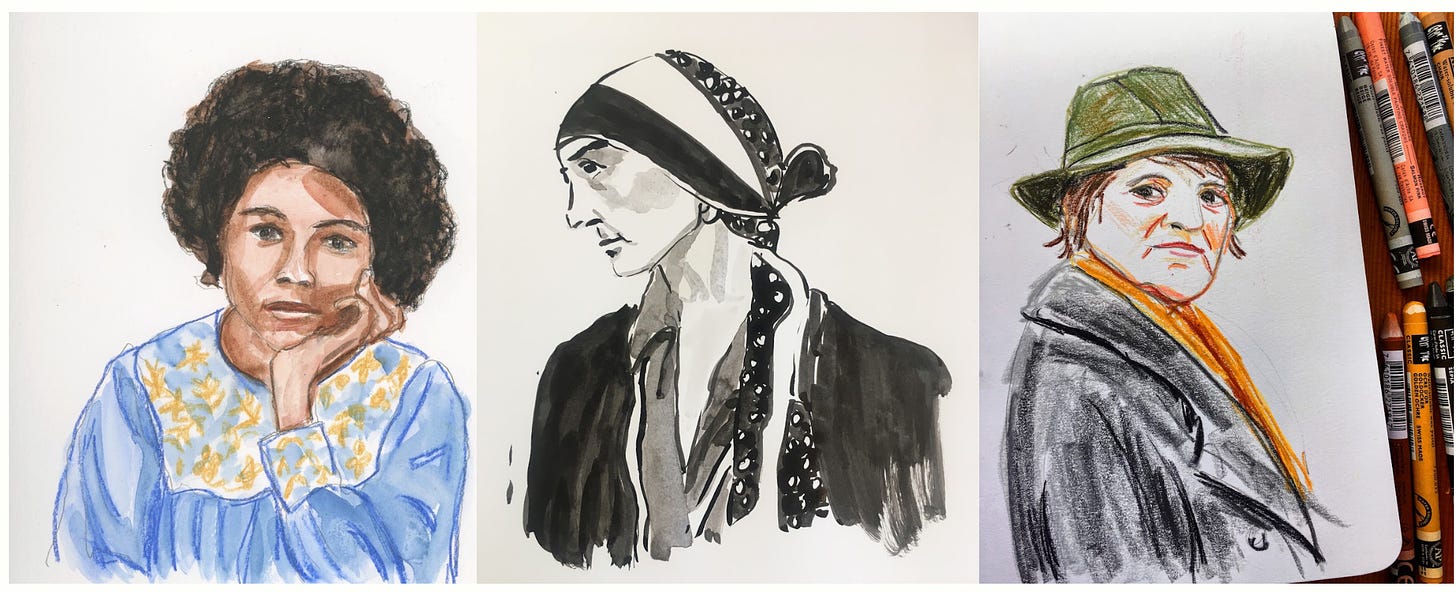

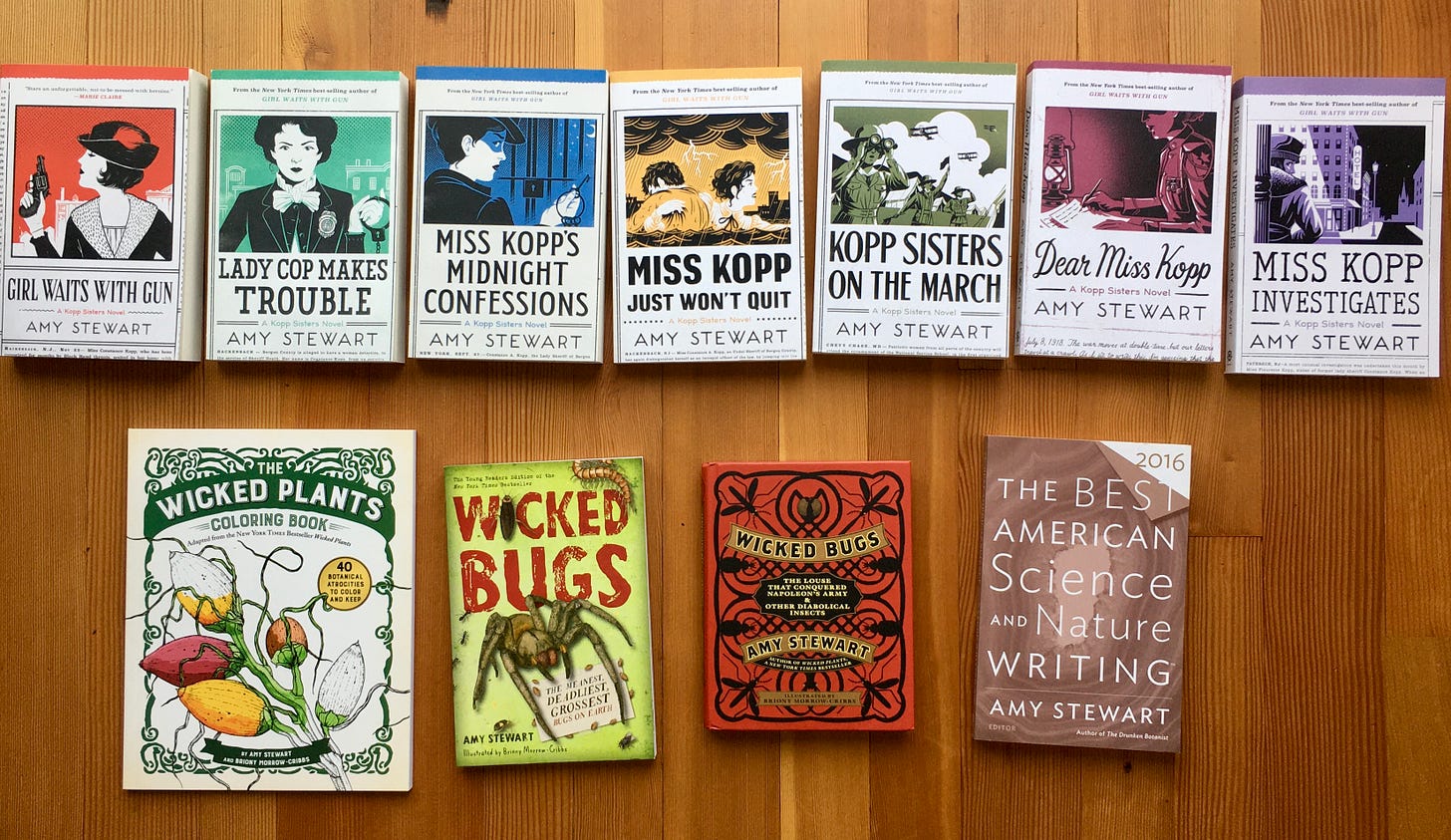
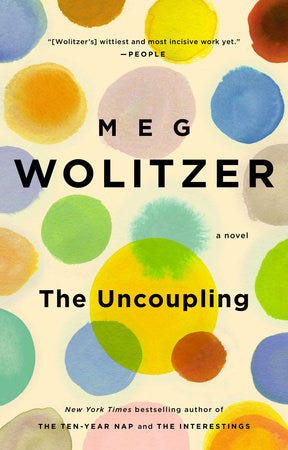
First a book series suggestion: The Pentecost and Parker mystery series (two books so far) by Stephen Spotswood. Former circus knife-thrower Willowjean Parker becomes assistant to Lillian Pentecost, a private eye in 1942 New York City. Lillian has multiple sclerosis; Willowjean is bisexual. It's fun and fast-paced, with complex plots and well-written characters.
Question: I'm a reference librarian, but since the advent of the internet we don't get a whole lot of good, in-depth reference questions. Do you use the library, either for your leisure reading or your research? If you do, what library resources have you found to be the most helpful?
Thank you!
I love your newsletter and your "hodgepodge." It's great that you are interested in so many different areas and aren't afraid to write about them all. So many creatives today limit themselves to one focus. I too am interested in books, writing, cooking, art, and a host of other subjects. I can't pick just one!
Book Recommendation: The Weight of Ink by Rachel Kadish and The One In a Million Boy by Monica Wood. Both are fabulous and I've read them more than once.